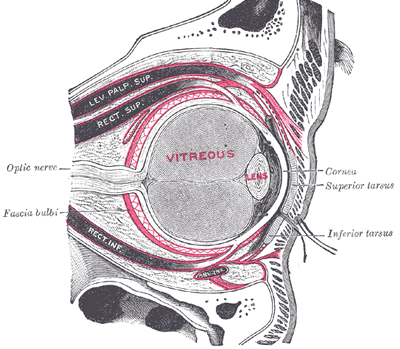Eyelid surgery
Before:


After:


Six months later:

What risks does a blepharoplasty bring with it?
In general, surgery on the eyelids has a very low associated risk factor. However, during an operation complications can never be completely ruled out and in some cases unpredictable results can occur.
Swelling and bruising
The extent and duration of swelling and bruising after the operation are very different and individually marked.
Infection
Infection of the wound area is extremely rare. With proper treatment the result does not necessarily deteriorate.
Impaired wound healing in the lids is also very rare. Additional factors usually play a role in delayed healing, such as in diabetics, smokers or patients with bleeding disorders. These risk factors should be included in the detailed patient interview.
Infection in the lower eyelids can cause a distortion or deformity of the lower lid. This is a very unpleasant complication and is rare. If infected tissue is removed to prevent infection or wound healing, it can lead to a distortion of the eyelid. Massage of the lower lid can rectify the result, or else we do a corrective operation.
When selecting a good surgeon with diligence and compliance the desired postoperative aesthetic result is generally achieved without complications and with good success. If you would like to discuss any other risks associated with the operation, you can talk to Dr Dirk Kremer in your pre-op consultation.
How do I prepare myself for the operation of the Blepharoplasty?
It is advisable to plan for around seven days off after the operation. This will give your procedure time to heal and for the proper results to become evident.
In the days before eyelid surgery, you should also take the time to be rested mentally and physically.
Aspirin and similar blood-thinning medications should for their inhibitory effect on blood clotting not be consumed for at least 1-2 weeks before surgery. For questions and doubts before the surgery, please call your surgeon in Harley Street.
Where is the surgery?
Lid tightening will be an outpatient procedure as a rule. After surgery, you will have a short recovery and observation period before going home. In no case should you ever drive a car.
What is used for anaesthesia?
In general, eyelid surgery is performed under local anaesthesia. With local anaesthesia, you will also receive a sedative (either as a tablet or by intravenous injection in the arm vein) which puts you in a kind of twilight sleep; you are awake, but relaxed and insensitive to pain.
Prior to the operation, if general anaesthesia is planned you will have a consultation and discuss the procedure with your anaesthesiologist. In this case he/she will monitor you throughout the operation controlling the anaesthetic.
However, general anaesthesia is usually the exception.
About the plastic surgery
A tightening of the eyelids usually takes about 45-60 minutes, depending on how pronounced is the result. The streamlining of the lower eyelids takes about the same time.
The plastic surgery is as follows:
Upper eyelid:
In the natural crease of the upper lid the incision is made, this runs out laterally just above the outer edge of the lid in the so-called laugh lines.
How much skin is removed will be assessed before the operation and determined by alternately closing the eyes.
The designated skin is then dissected and removed from the underlying muscle.
After dividing the superficial eye sphincter, a very fine membrane (septum) is cut and thereafter, the pre-expressed fat in the eyelid is removed.
In order to operate on tissue preservation, a tightening of the sagging septum is performed and positioned back into the orbit. This method is useful, especially in younger patients, as you can assume that in the course of life (usually after 10-12 years) a renewed tightening of the eyelids will be required. Thereafter, the upper lid is again closed with a continuous, outwardly invisible skin suture.
Lower eyelid:
With the lower eyelid, an incision is made just below the eyelashes.
It cuts through the skin and allows the underlying subcutaneous tissue and muscle to be gently lifted.
After partial transection of the annular sphincter at the lower eyelid, and the opening of the septum away from the orbit to the lower eyelid, fat is gently pushed forward. This fat gives the patient the appearance of the popularly known "eye bags". Then the excess skin is removed very carefully and strictly, followed by the closure of the eyelid with a continuous, outwardly invisible skin suture.
What is a transconjunctival blepharoplasty?
Blepharoplasty is usually performed through external incisions made along the natural skin lines of the eyelids, such as the creases of the upper lids and below the lashes of the lower lids. Incisions may be made from the inside surface of the lower eyelid (
transconjunctival blepharoplasty); this allows removal of lower eyelid fat without an externally-visible scar, but does not allow excess skin to be removed.
What must be done if the eyelid surgery?
The first 24 hours after surgery (Blepharoplasty):
- Sleep with your head elevated, and avoid any effort that could increase your blood pressure. If possible, stay rested in bed for the first 24hrs.
- Do not drink caffeinated beverages.
- Cool your eyes with Eisbrille or cover your wound dressings in crushed ice. Place gently on the eye and replace hourly in the first 24hrs. Pay attention to your fresh seams.
- Please take medication prescribed by a doctor as directed. In general, only blood-thinning agents such as aspirin should be taken before and after surgery.
Talk with your surgeon, Dr Dirk Kremer, if you:
-
Experience eye pain. A slight burning of the eyelids is normal.
-
Have vision problems. Due to the swelling of the eyelids after the surgery, a low blurred vision is not unusual.
- Experience sudden swelling or bleeding.
Eye Care:
-
Bathe your eyes as often as possible in the first three days after the Blepharoplasty.
- Stitches are usually removed 4-5 days after blepharoplasty. Then wait another 2 days before applying makeup to the eyes.
- Contact lenses can be worn again, once you are no longer uncomfortable. If possible, however, one should wear glasses, so as not to disturb the lid when inserting the lenses, during the healing of the sutures.
- Because of certain sensitivity in the first days after the blepharoplasty, sunglasses can be worn and can also be very useful in concealing the effect.
- Reading and television should be avoided in the first 2 days.
General advice after blepharoplasty
- In the first week after eyelid surgery you should sleep on your back with your head elevated.
- Rest as much as possible in the first 2 weeks.
- Most of the swelling will subside within the first week.
- Sometimes the whites of the eyes become slightly discoloured, with a bluish tint. This change is painless and does not affect your eyesight, and quickly reverts back to normal.
- Some weeks after a blepharoplasty, the formation of small white nodules called milia can occur on the eyelids. This can easily be removed by your doctor during a visit to the practice.
- If you experience light burning and tearing of the eyes after eyelid surgery, appropriate eye drops are applied.


 The so-called tear bags are actually made of fatty tissue that bulges into the lower lid more with increasing age. This natural ageing process leads to an unpleasant change in the eye area and affects a youthful visage. A barely visible cut is made just below the lashes of the under lid, to remove the bulging fat and restore the septum to its original "youthful" position. If there are sufficient excess skin folds, a small strip of the eyelid is surgically removed. After wound closure there remains a fine, thin line that follows the natural skin folds.
The so-called tear bags are actually made of fatty tissue that bulges into the lower lid more with increasing age. This natural ageing process leads to an unpleasant change in the eye area and affects a youthful visage. A barely visible cut is made just below the lashes of the under lid, to remove the bulging fat and restore the septum to its original "youthful" position. If there are sufficient excess skin folds, a small strip of the eyelid is surgically removed. After wound closure there remains a fine, thin line that follows the natural skin folds. 











